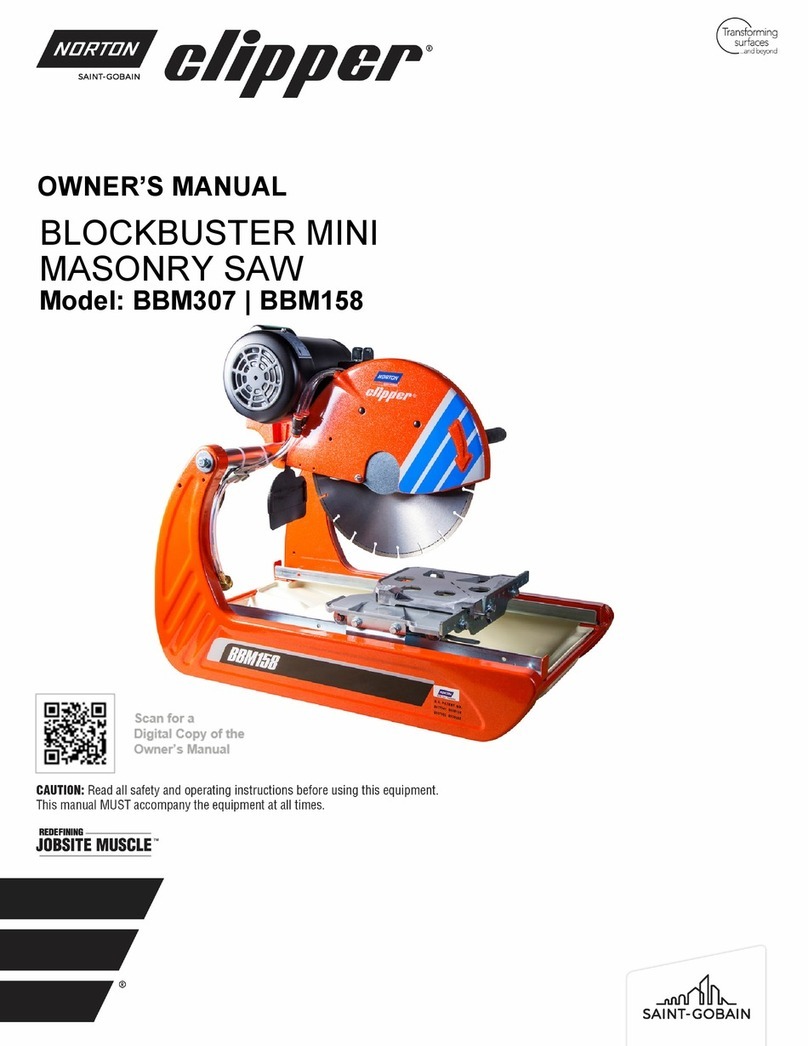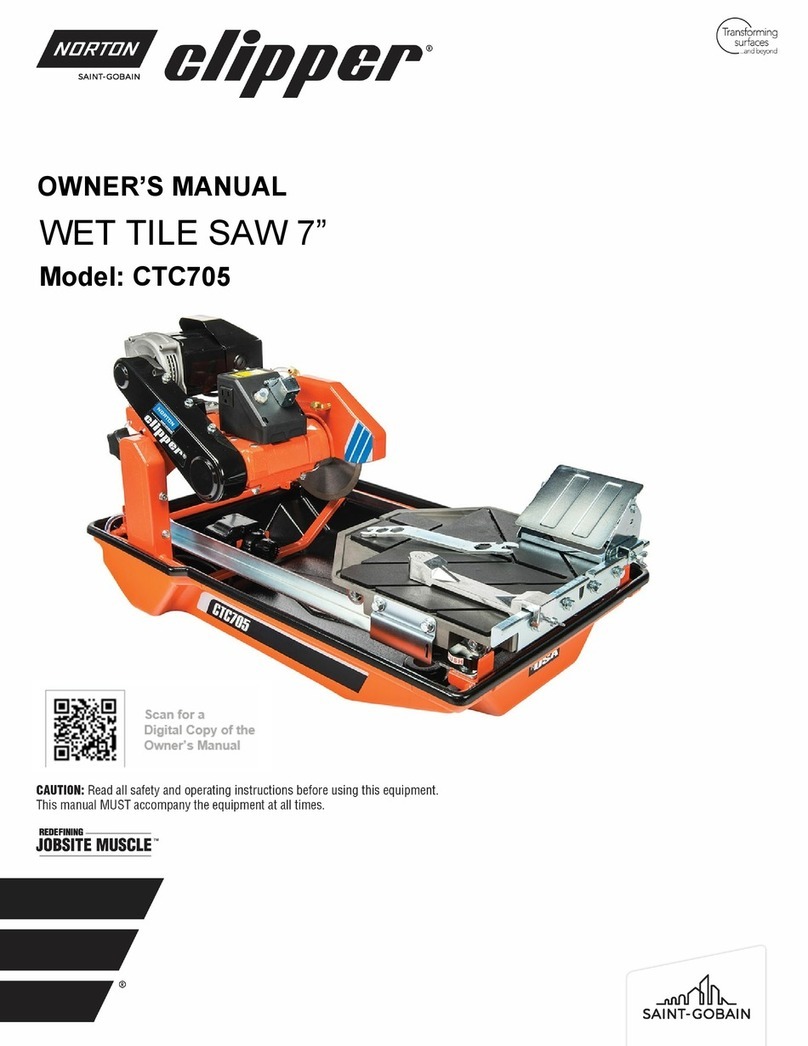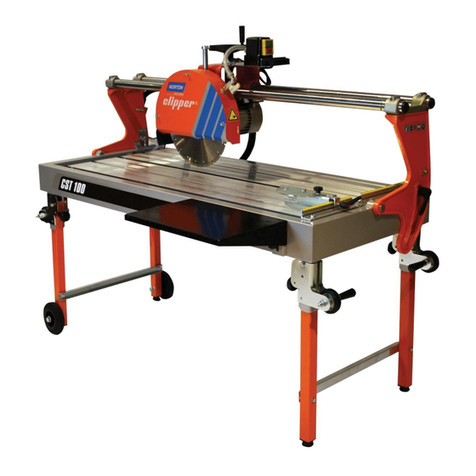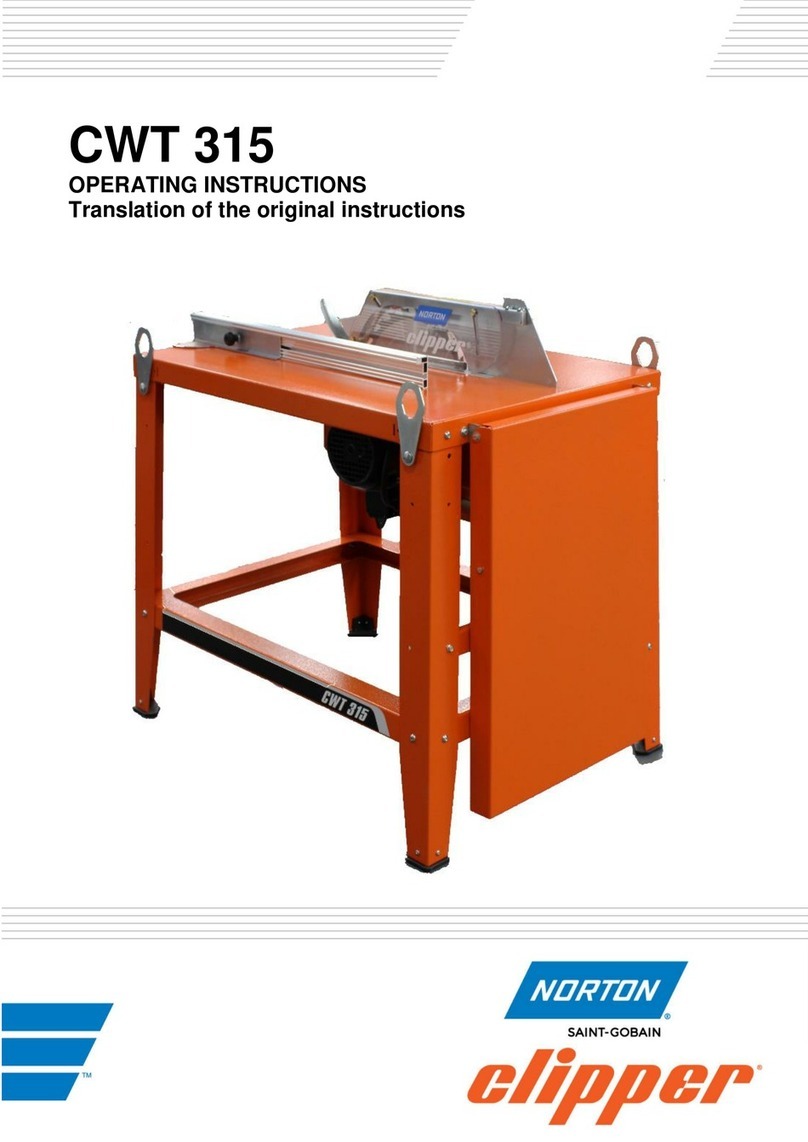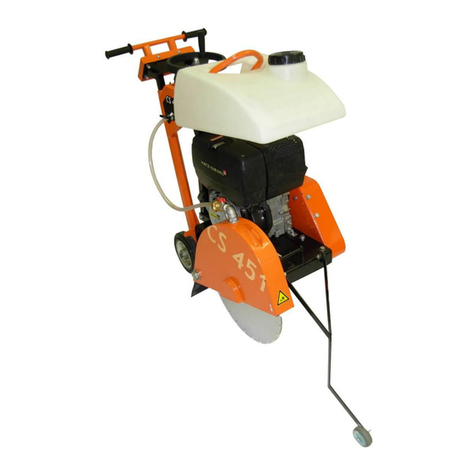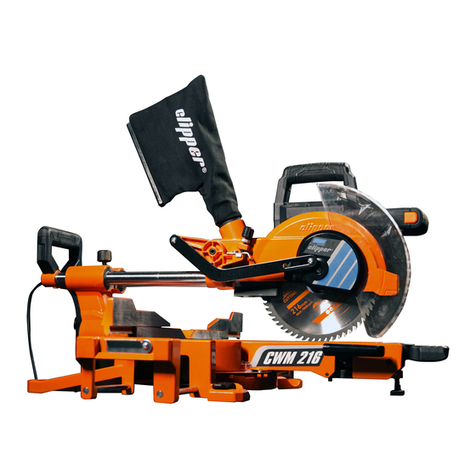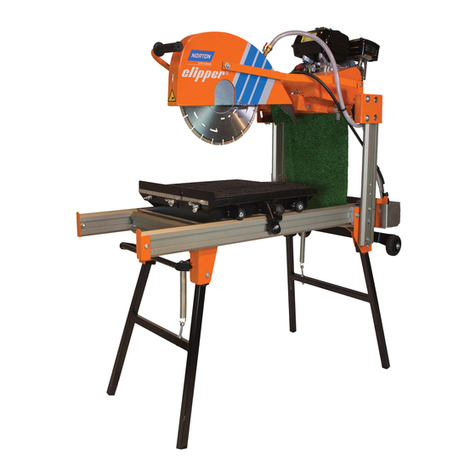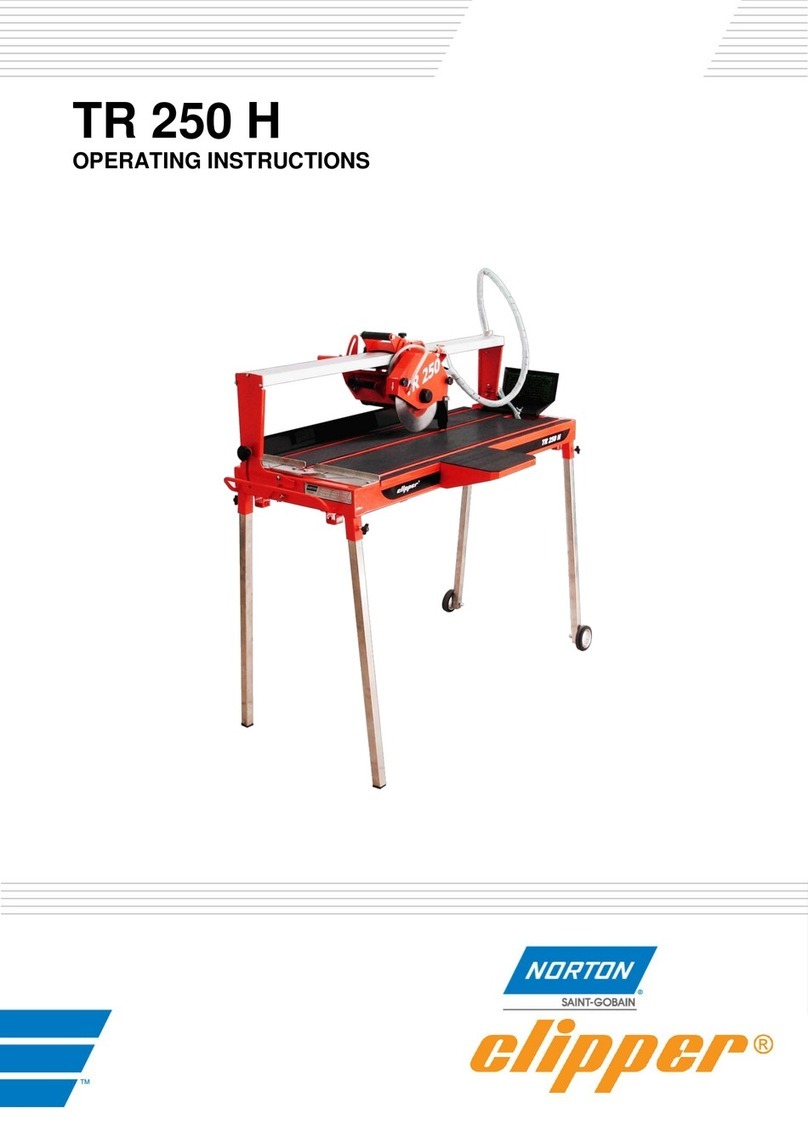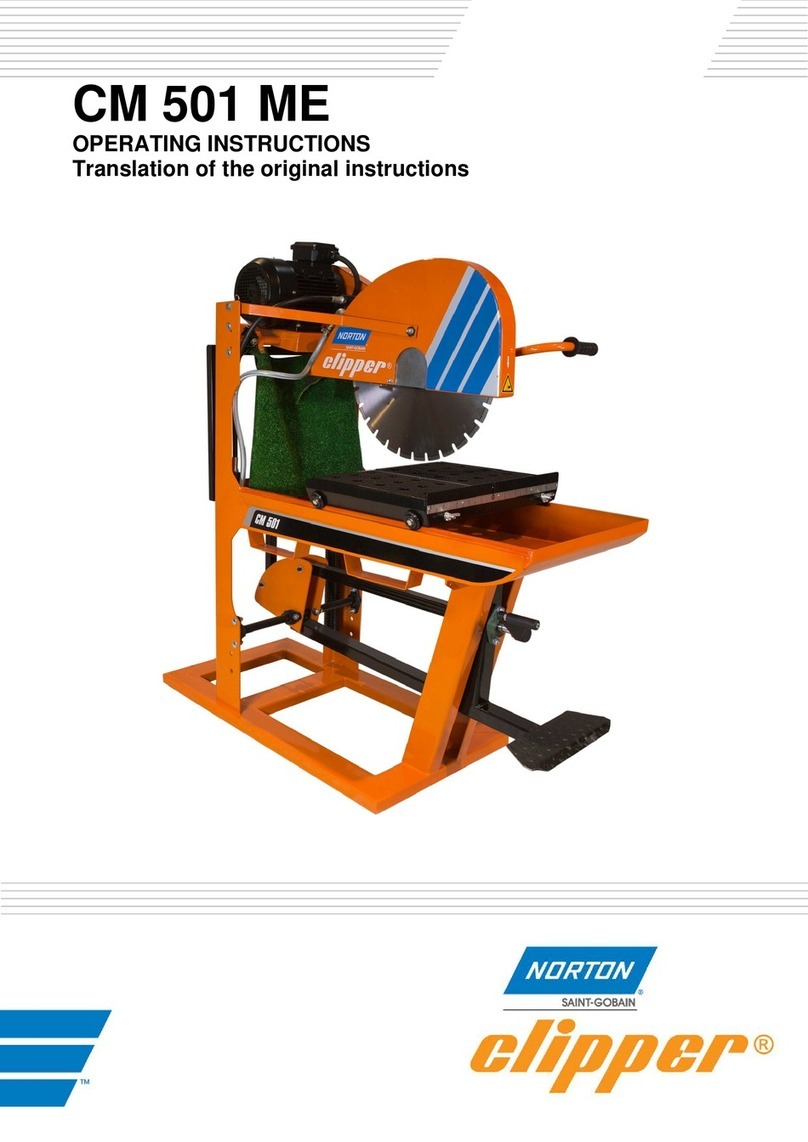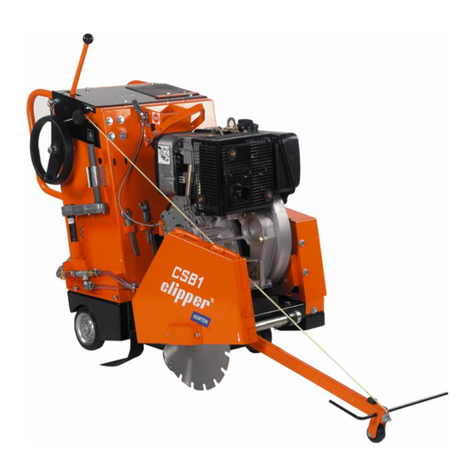10
2.3. Personal safety
a. Stay alert, watch what you are doing and use common sense when operating a power
tool. Do not use a power tool while you are tired or under the influence of drugs, alcohol
or medication. A moment of inattention while operating power tools may result in serious
personal injury.
b. Use personal protective equipment. Always wear eye protection. Protective equipment such
as dust mask, non-skid safety shoes, hard hat, or hearing protection used for appropriate
conditions will reduce personal injuries.
c. Prevent unintentional starting. Ensure the switch is in the off-position before connecting
to power source and/or battery pack, picking up or carrying the tool. Carrying power tools
with your finger on the switch may results accidents.
d. Remove any adjusting key or wrench before turning the power tool on. A wrench or a key
left attached to a rotating part of the power tool may result in personal injury.
e. Do not overreach. Keep proper footing and balance at all times. This enables better control
of the power tool in unexpected situations.
f. Dress properly. Do not wear loose clothing or jewelry. Keep your hair, clothing and gloves
away from moving parts. Loose clothes, jewelry or long hair can be caught in moving parts.
g. If devices are provided for the connection of dust extraction and collection facilities,
ensure these are connected and properly used. Use of dust collection can reduce dust-
related hazards.
h. Do not let familiarity gained from frequent use of tools allow you to become complacent
and ignore tool safety principles. A careless action can cause severe injury within a fraction
of a second.
i. Only use safety equipment that has been approved by an appropriate standards agency.
Unapproved safety equipment may not provide adequate protection.
j. Avoid unintentional starting. Prepare to begin work before turning on the tool.
k. Do not leave the tool unattended when it is plugged into an electrical outlet. Turn off the
tool, and unplug it from its
electrical outlet before leaving.
l. This product is not a toy. Keep it out of reach of children.
m. People with pacemakers should consult their physician(s) before use. Electromagnetic
fields in close proximity to heart pacemaker could cause pacemaker interference or pacemaker
failure. In addition, people with pacemakers should:
• Avoid operating alone.
• Do not use with Trigger locked on.
• Properly maintain and inspect to avoid electrical shock.
• Properly ground power cord.
Ground Fault Circuit Interrupter (GFCI) should also be implemented –it prevents sustained
electrical shock.
n. The warnings, precautions, and instructions discussed in this instruction manual cannot
cover all possible conditions and situations that may occur. It must be understood by the
operator that common sense and caution are factors which cannot be built into this product, but
must be supplied by the operator.
